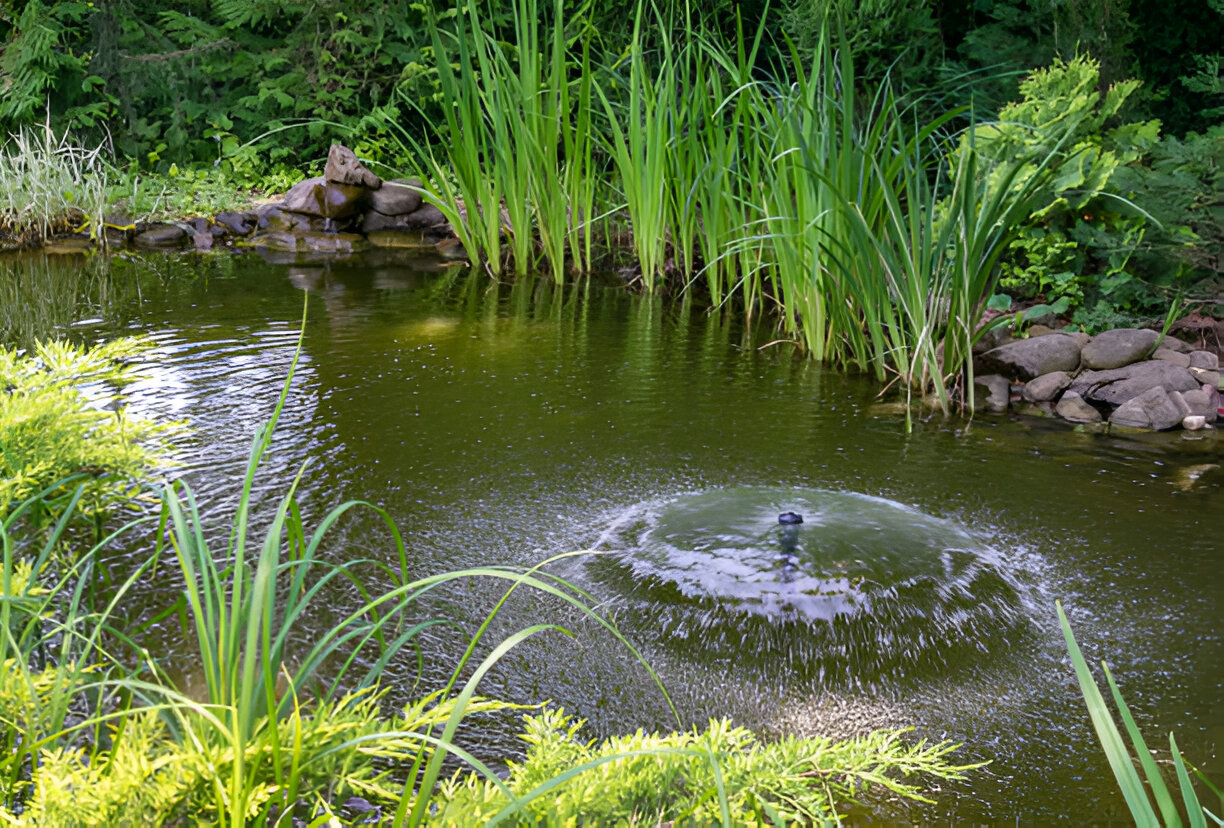The existence of a thriving pond ecosystem depends on having one fundamental invisible element, which is oxygen. The survival of your fish plants and beneficial bacteria depends on the crucial element of dissolved oxygen, similar to how humans need air to survive. A pond becomes dangerous to all living inhabitants when oxygen concentrations in the waterfall are below a safe threshold.
One of the most effective solutions is installing Oase Pond air pumps, which efficiently circulate oxygen throughout your water feature. The pond maintenance specialist That Pond Guy provides complete aquatic expertise through professional pond care services that ensure the year-round health of your pond ecosystem.
The Critical Role of Oxygen in Ponds
Oxygen performs several essential functions:
- Supports fish respiration and overall health
- Enables beneficial bacteria to break down organic waste
- Helps prevent toxic gas buildup
- Reduces algae growth by limiting excess CO2.
Six mg of oxygen stands as the optimal concentration for pond health. Danger to fish health can result from water containing less than 3mg/L since fish stress and eventual death are possible outcomes.
Warning Signs of Low Oxygen Levels
Watch for these red flags:
- Fish gasping at the water’s surface (especially in early morning)
- Lethargic or slow-moving fish
- Increased algae blooms
- Foul odours from the water
- Sudden fish deaths during hot weather.
Common Causes of Oxygen Depletion
Several factors can reduce oxygen levels:
- High Temperatures: Warm water holds less oxygen than cool water
- Algae Blooms: The oxygen production process by algae functions during daylight hours, but at night, the algae absorb oxygen
- Overstocking: Too many fish increase oxygen demand
- Lack of Water Movement: Stagnant water limits oxygen exchange
- Organic Debris: Decomposing leaves and waste consume oxygen.
5 Effective Ways to Boost Oxygen Levels
1. Install a Water Feature
Source agitation from waterfalls, fountains, and cascades creates conditions for water oxygen absorption into surface areas. The increase in water height during descent results in greater oxygen absorption.
2. Use an Air Pump System
Oase pond air pumps utilise diffusers to develop thousands of small oxygen-rich bubbles that purify deep pond waters. The actual source of oxygen delivery from air pumps does not stem from bubbles. Still, it comes through the water circulation they generate.
3. Add Oxygen Stones
The porous stones serve as air pump connectors, which generate small bubbles that create large oxygen exchange areas. They are particularly effective in deep ponds where surface aeration is not enough.
4. Incorporate Aquatic Plants
Plants like water lilies and hornwort release oxygen during photosynthesis. Plants function only during daylight hours, but they do not serve as a reliable exclusive oxygen-cycling system because they reverse oxygen flow when darkness occurs.
5. Reduce Fish Load and Debris
Your pond size should match its stocking capacity, while you need to perform regular leaf and organic waste removal to avoid oxygen consumption from these materials.
Final Thoughts
Proper oxygen management is the most essential obligation when caring for a pond. Combining water movement with Oase Pond air pumps and routine maintenance establishes a suitable habitat for fish to live in while lowering algae growth.



